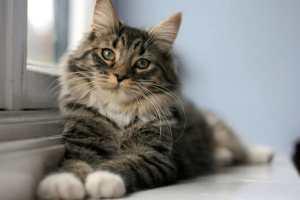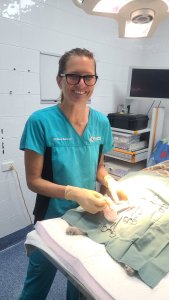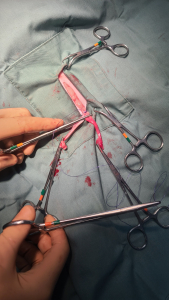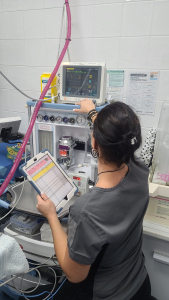Pawsitively Vital: The Benefits of Spaying Your Cat and What to Expect
Benefits of spaying your cat
Did you know that studies have revealed a remarkable fact: spaying your feline friend can extend their life by a staggering 40% compared to their unspayed counterparts? For male cats, this percentage soars even higher, exceeding a remarkable 60%. This longevity boost is primarily attributed to curbing the instinct to roam freely, which comes with a slew of dangers such as road crossings, cat skirmishes, and increased susceptibility to feline leukemia and peritonitis.
But there are more compelling reasons to consider desexing your beloved cat. One of the sobering statistics is that mammary cancer ranks as the third most common cancer in female cats, and a staggering 95% of these cases turn out to be malignant. However, by opting to desex your cat at the age of 6 months, you can effectively shield them from falling victim to this devastating ailment. Beyond that, desexing also helps prevent unwanted pregnancies and related complications, tackles behavioural issues like spraying (in males) and incessant nighttime meowing (in females), and serves as a crucial deterrent against life-threatening uterine infections like pyometra.

When to get your cat spayed
At Nicklin Way Veterinary Surgery, we strongly recommend spaying your feline companion at the age of 6 months. We’re not just professionals; we’re pet enthusiasts ourselves. We understand that entrusting your cat to undergo abdominal surgery can be a stressful ordeal. While spaying may be considered routine in the world of veterinary medicine, we treat every patient with the same level of medical care and personal affection that we would lavish on our own beloved pets.
What to expect during your cat’s desexing appointment
When you schedule your appointment, either by phone or in person, our receptionist will provide you with all the information to prepare for the upcoming surgery, which includes withholding food the evening before. On the day of the surgery, you’ll bring your cat in for a brief admission appointment. Your veterinarian will conduct a thorough checkup and inquire about your cat’s recent well-being. We’ll also address any queries or concerns you may have. After some necessary paperwork, a nurse will administer a sedative to your cat via a small under-the-skin injection. This sedative takes effect swiftly, alleviating any anxiety associated with the unfamiliar environment and inducing mild drowsiness. To ensure your cat’s comfort, we provide ample bedding, a litter tray, and a cozy hideaway in their cage, should they prefer it. Our dedicated hospital nurses will keep a watchful eye on your pet while they are under sedation.
When it’s time for the surgery, we’ll shave a small section of the front leg to insert a catheter into a vein. This catheter allows us to administer an anaesthesia-inducing drug, without requiring your cat to count down from 10! During the surgery, we utilise the catheter to provide fluids, regulate blood pressure and ensure proper kidney function. After the onset of anaesthesia, a tube is placed in the windpipe, and your cat remains anesthetised through inhalation of a gaseous anaesthetic via the tube. The abdominal area is clipped and surgically cleaned, and a skilled surgeon makes an incision in the midline of the belly—without cutting through any muscle to reach the reproductive organs. The surgeon identifies, ligates, and removes the uterus and ovaries. Following a meticulous inspection, the incision is sutured with high-quality materials, with skin sutures designed to dissolve over the next few months. Your pet receives an injection for pain relief lasting three days, and our team keeps a close watch as they awaken, ensuring they remain warm and comfortable. If your pet shows any signs of distress, our nurses or vets will provide comforting company. As soon as your pet is fully awake, our nurse will inform you of the procedure’s outcome and arrange a pickup time. During this visit, the vet will also offer guidance on home care, which may include the temporary use of an e-collar.



Cats are known for their resilience, and despite being groggy from anaesthesia for a few hours, most cats act as if nothing happened the following day. Our team will follow up with you the day after the surgery, and we even offer a free post-op check after 3-5 days if it doesn’t stress your cat too much.
Most commonly asked questions
How will my other cat react when my spayed cat returns home?
While dogs may have an exceptional sense of smell, cats are actually superior at differentiating scents. Your cat may carry a hospital-like scent upon returning, which could unsettle your other feline companion. To ease the transition, you can consider temporarily separating them, transferring the scent by rubbing a towel on both cats’ cheeks, or by using Feliway, a feel-good pheromone spray.
How do you ensure the anaesthesia is safe?
We take anaesthesia safety seriously. Our experienced team uses modern instruments, and our clinic is equipped with state-of-the-art monitoring equipment. This equipment tracks vital signs like ECG, oxygen and carbon dioxide levels, heart rate, temperature, and blood pressure—ensuring your cat’s safety during the procedure.
Will spaying change my cat’s personality?
Spaying will eliminate sexual behaviours and often reduce aggressive tendencies. While it may take up to two weeks for hormones to stabilize after spaying, it won’t fundamentally alter your cat’s personality. It’s worth noting that spaying may slow down metabolism slightly, so be mindful of their diet to prevent obesity.
Is it healthy for my cat to have a litter before spaying?
There are no documented benefits to letting your cat have a litter. In fact, allowing your cat to go through multiple heats and pregnancies increases their risk of uterine and ovarian cancer. Given the genuine concern of cat overpopulation, making the responsible choice to desex your cat at 6 months can help alleviate overcrowding in shelters and give other cats a chance to find loving homes.
Written by Dr Ruby Schrijnders-Schmidt



